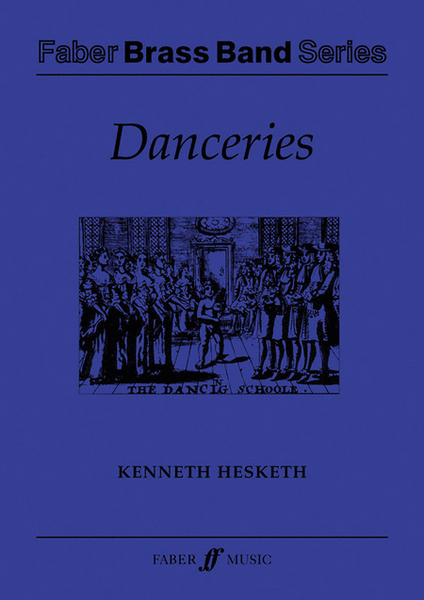Danceries (Set I)
-
Ships in 1 to 2 weeks
Details
Description
SKU: AP.12-0571565123
Composed by Kenneth Hesketh. 5 or More; Brass Band; Performance Music Ensemble; Solo Small Ensembles. Faber Edition: Faber Brass Band Series. Form: Dance. 20th Century; Masterwork. Score and Part(s). Faber Music #12-0571565123. Published by Faber Music (AP.12-0571565123).ISBN 9780571565122. UPC: 571565123000. English.
The term Danceries can be found in a copy of Playford's Dancing Master, an extensive collection of folk and popular tunes of the seventeenth century (and no doubt earlier). This publication was used by master fiddle players to teach the various dance steps of the day to a nobleman's house or a king's court. Whilst this present set of 'Danceries' cannot be said to be an aid to terpsichorean agility, it will at least set feet tapping!
The melodies themselves are a mixture of new and old---well, nearly. Where the old occurs it has been adapted in mood and composition and is often interspersed with completely new material. The harmonies and rhythms bring a breath of the new into these themes and add to the drama of the set.
Movement 1: Lull me beyond thee.
Gentle and lilting, almost a barcarole, this movement is very much a reverie. The original tune had the name 'Poor Robin's Maggot' - a rather disconcerting title; maggot, however, in seventeenth-century parlance meant whim or fancy. This theme can also be found in The Beggar's Opera by John Gay (first performed in 1728) under the title 'Would you have a young lady' (Air 21).
Movement 2: Catching of Quails.
A colorful, buoyant scherzo on an original melody. The thematic material is shuttled around the band to contrast with full-bodied tuttis. The last few bars fade away to almost nothing before a final surprise!
Movement 3: My Lady's Rest.
A tender pavane, also on an original theme, with Moorish leanings. Solos for principal winds and brass contrast with warmer tutti passages. The movement culminates with a final presentation of the theme before evaporating in held flute and trumpet chords.
Movement 4: Quodling's delight.
The final movement to the set combining one of the melodies from Playford's Dancing Master ('Goddesses') with an original contrasting melody. A dramatic and exuberant ending to the set of 'Danceries'.

 Share
Share